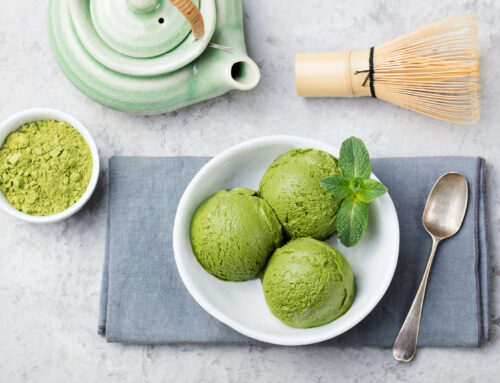Essential Types of Spices for Your Luxury Kitchen
Whether you are an avid chef or just beginning your culinary adventures, a well-stocked spice cabinet is a must. As you develop your pantry, you’ll find that there are spices you can’t live without and those that you love, but, either because of their flavor or exotic nature, only use on special occasions. If you are looking for suggestions about what types of spices to add to your rack, read on for some essentials and some splurges you may want to consider.
Za’atar
Za’atar might be a bit less familiar to you unless you are already regularly cooking Indian or Thai foods. It is actually a combination of spices that offers an immediately recognizable flavor. Za’atar can be added to an array of cuisine, from cucumber yogurt to meat rubs. Martha Stewart Living suggests that you “try topping salads, rice, popcorn, sauces, eggs, breads, cheeses, or fish with za’atar.”
Cassia Buds
If you have vintage recipes from before the 1920s, you may see mentions of Cassia Buds. They are nearly impossible to find because they come from rarely explored areas of China, and spice importers fell victim to a trade embargo with China in the 1920s. The good news is that some spice importers can get still get this unusual option which was once all the rage in picking recipes. Don’t have any of those older recipes? Cinnamon Bark was the most common replacement spice, so you may have luck switching the ingredients back to this Chinese rarity.
Whole Madagascar Vanilla Beans
Your preparation of the vanilla bean will depend on how you plan on using it. Real Simple notes that if you want to infuse vodka or sugar, you can easily use the whole vanilla bean or scrape out the seed. Despite how often it is incorporated into ice cream and other sweet desserts, the natural vanilla bean from Madagascar can be quite pricey due to the labor-intensive process for growing and harvesting them. In fact, it is the second most expensive spice in the world, and often people substitute if for less expensive vanilla extract. However, the whole vanilla bean spice is a must for any luxury kitchen.
Turmeric
Turmeric adds big color and noticeable flavor to any dish, and the debate continues around its healthy properties. Real Simple considers it a must for anyone making “Indian and Thai dishes,” as well as Pakistani and Bangladeshi cuisine. A native spice in Southwest India, this spice has been steadily gaining popularity as an addition to a variety of dishes. Martha Stewart Living recommends it in “sauces, omelets, egg salads, curry dishes, meat and chicken stews and into almost any soup.” A little bit does go a long way, so if you are trying your hand at seasoning with Turmeric for the first time, take it slowly.
Grains of Paradise
Native to an area of West Africa, Grains of Paradise has a zesty taste to them that also reveals flavors of butter, coriander and flowers. Used since the Middle Ages, the spice is quite expensive and challenging to locate but believe it or not, this spice used to be a cheaper option than Black Pepper. When can this spice be used? Alton Brown suggests adding it to okra dishes, while others recommend using it in recipes for Steak Au Poivre or choose a Middle Ages route and substitute it in intensely-flavored Black Pepper recipes.
Whole Cloves
Whole cloves also make most lists of “must have” kitchen spices. There is no doubt that this strong earthy, yet sweet spice can add some much-needed flavor to an array of culinary creations. The editors of Real Simple advise using “them in mulled cider or press their stems into baked ham.” Meanwhile, the experts over at Food & Wine see them as being the perfect addition to “baking and desserts, they can also be good with a roast.”
Wattleseed
Unless you are from Australia, or know a lot about Australian cuisine, you may not have found reason to add Wattleseed to your pantry. To date, there are more 120 varieties of this type of spice, and it’s quite versatile. It can be added as a topping to sweet desserts and incorporated into cakes. It’s also quite a popular addition to sweet and savory recipes. Ask your favorite spice importer about how to order this delightful choice.
Crushed Red Pepper
Referred to as flaked cayenne by Food & Wine, this spice is ideal for bringing depth to your favorite fare. You’ll most often see crushed red pepper as an addition to pizza, but you can easily incorporate it into your broccoli rabe, cauliflower or even sauces. Beware of when you add them – sprinkle the crushed red pepper at the end of dish preparation for subtle, sweet flavoring or add them to the beginning of the process to bring the heat. Is it as hot as cayenne? No, but Food & Wine explains “there is something to be said about the rusticness of eating dried seeds and pieces of pepper.”
Sansho Japanese Peppercorns
Sansho Japanese Peppercorns is a type of spice that is perfect for those who love to take culinary risks. Related to the Sichuan Pepper, this spice is quite rare in the United States. For those daring enough to try it, you may be surprised by an almost tingling, numbing, nearly electrical feeling in the mouth. If you can find it, the Sansho spice can be incorporated in a variety of Asian dishes, including sauces for vegetables, fish, pork, chicken and broiled eel.
Saffron
As Food & Wine reports, saffron is the world’s most expensive type of spice. It has an earthy, sweet taste that “heightens a dish’s complexity without overpowering it.” The growing process is in part what makes it a true luxury item. Originally found in Central Asia, it comes from the stigma of the crocus flower (and it takes thousands of flowers to produce the equivalent of one pound of saffron threads). Today, you can find the spice being grown in India, Spain, Italy, Iran and Greece, but it has been honored for centuries. While it has been used for everything from clothing dye to medicine, the culinary world has adopted it for fine Mediterranean cuisine. If paella is on your menu, you’ll get a chance to work with this much-lauded spice.
Visit Distinctive Collection by Better Homes and Gardens® Real Estate when you begin your journey to buy or sell your unique home.








